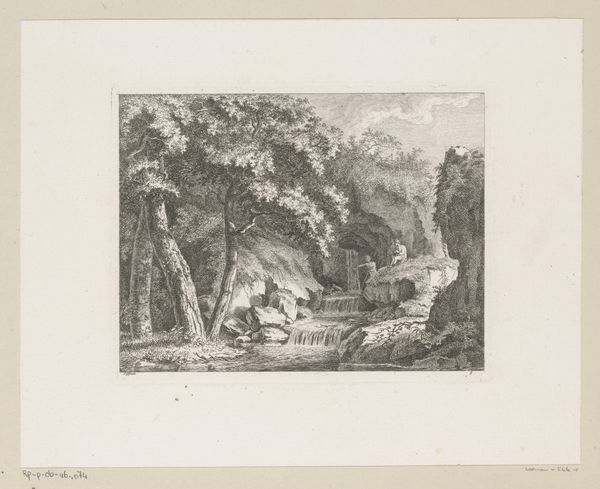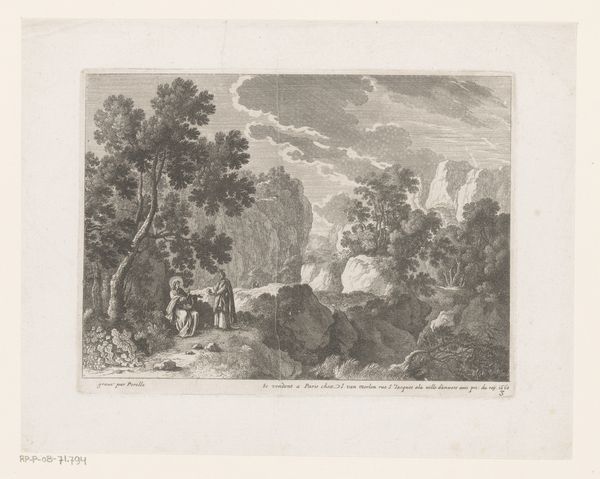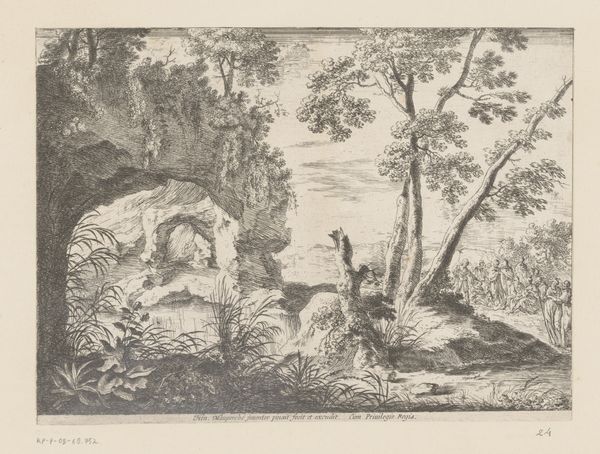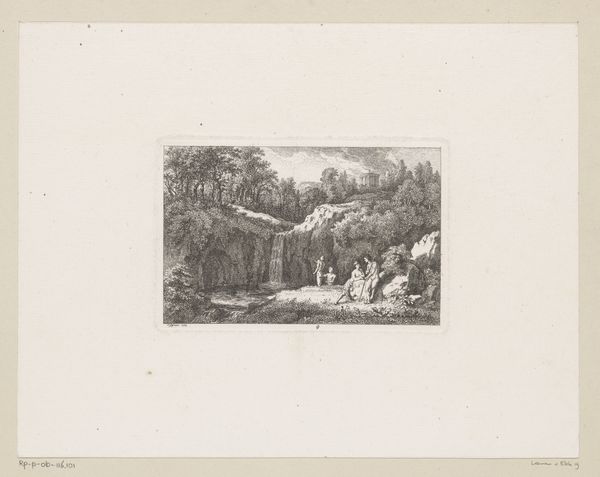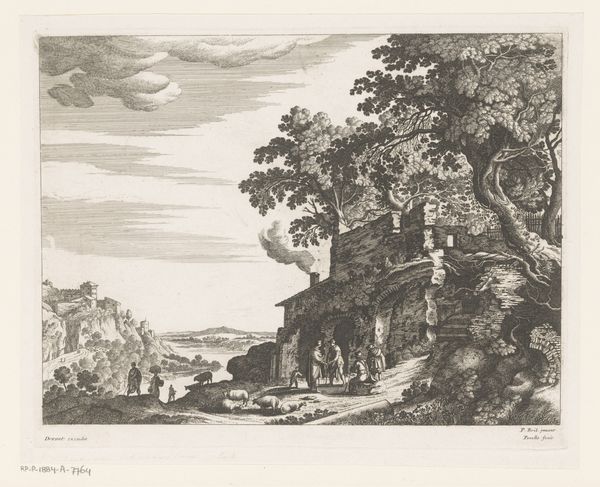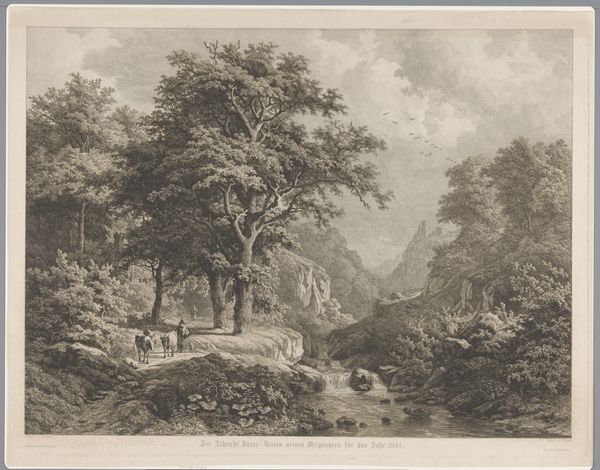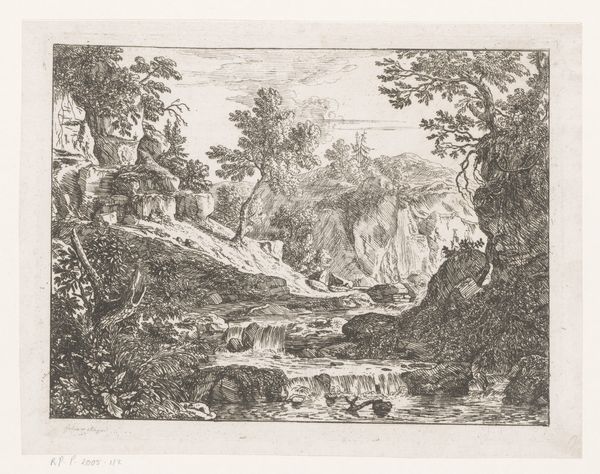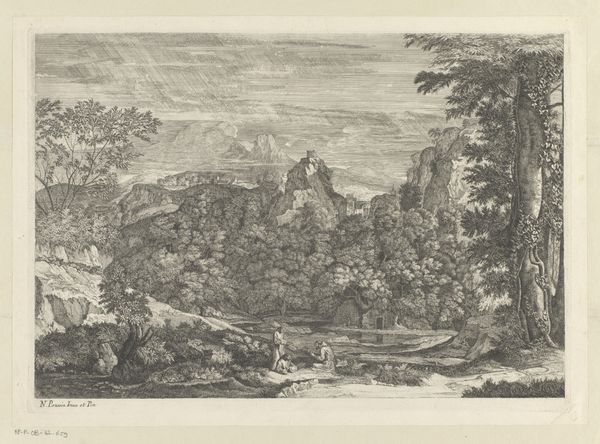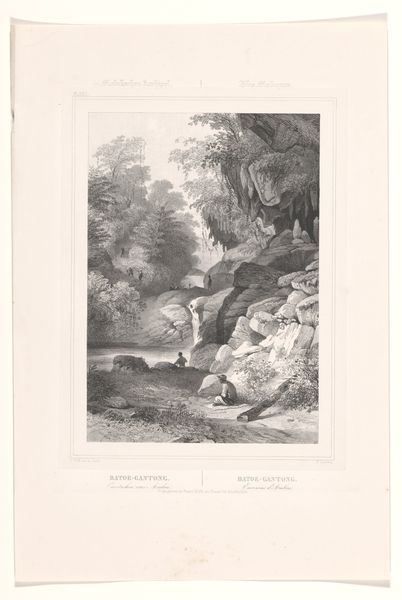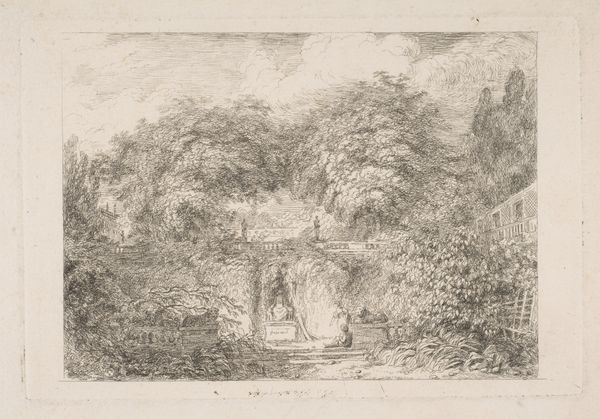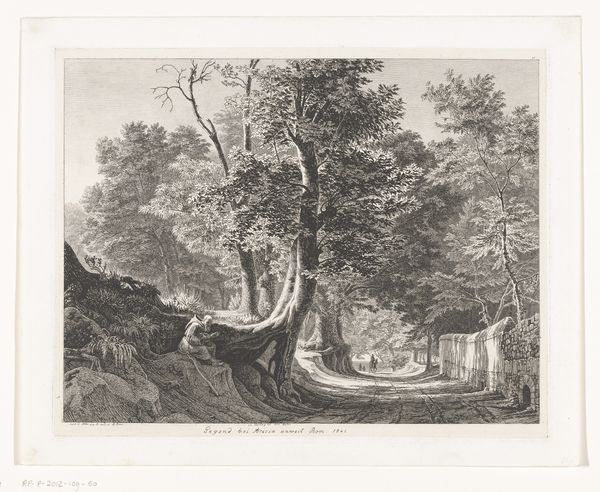
Dimensions: height 168 mm, width 204 mm
Copyright: Rijks Museum: Open Domain
Curator: Look at the meticulous line work in this etching from 1767-1768 by Salomon Gessner. It’s entitled "Twee vrouwen halen water bij een waterval," which translates to "Two Women Getting Water at a Waterfall." Editor: It evokes a sense of quiet contemplation, doesn’t it? The soft lighting, the delicate lines—it’s almost dreamlike. I immediately notice how the two figures retrieving water dominate the scene and appear quite prominent. Curator: Absolutely, Gessner masterfully used etching to achieve that effect. Consider how the printmaking process allows for the reproduction and distribution of this idyllic scene. It brings nature, a waterfall no less, into homes and collections for the consumption of those unable to travel or perhaps commune with it. Editor: I’m drawn to the symbolism of water, life-giving and pure. Note the women, rendered in classical style, almost like nymphs of the waterfall itself. Their presence is almost a kind of ancient myth brought to life; with the additional background figures it makes you consider it a kind of idyllic space from a lost era. Curator: It reflects the era’s interest in representing not just courtly life, but labor. Though idealized, the work references the realities of fetching water for daily use. We see, if we look at other prints by Gessner, the reoccurring theme of hard work, but always rendered as easy and elegant. The materiality of paper and ink further allows us to experience it in a tangible way. Editor: Perhaps the artist aimed to convey a universal and almost timeless scene of life-sustaining work within this romantic setting? The figures appear caught in an enduring cultural narrative beyond their specific time. Curator: Possibly. The work allows us to explore the Romanticism movement’s relationship with labor practices and representations of resources that can easily be commodified. Editor: Thinking about the waterfall motif, its presence certainly enlivens the scene with natural energies. It connects the earth to both women carrying vessels of nourishment—creating both psychological and material needs met simultaneously within a contained pictorial ecosystem. Curator: A final reflection, then, upon Gessner's approach, blending the naturalism and romanticism while also subtly reminding us of labor and resource management. Editor: A truly lovely scene in the collection, wouldn't you agree? A lasting testament to Gessner’s impact on how we perceive labor through symbol.
Comments
No comments
Be the first to comment and join the conversation on the ultimate creative platform.
